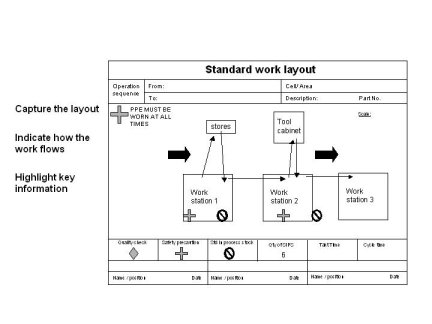Standardisation Gone Wrong
Sign up for our weekly newsletter for updates, articles and free giveaways of case studies, templates and training materials every issue! Simply enter your e-mail on the right
An example of standardisation being misunderstood
Standardisation gone wrong –
We all know that standardisation is the foundation stone for any improvement activity. It’s the building block and key enabler for so many other of the improvement tools we use, so how could it go wrong?
I recently went into a well known bakery chain to get some treats for a 'Sprint' workshop I was running. Now the context and detail here isn't really important but based on some of the questions I've been asked recently, I'll give these to you anyway.
The workshop was run to design some revised wording for the IVR system, based on Behavioural Economics (Nudge Theory), in order to educate customers that it would actually be much quicker and easier for them if they used the newly optimised self-serve options online, rather than call the contact centre (Not relevant in any way but someone would have asked!).
Anyway, back to the story at hand. I finally got to the front of the queue in the bakery store (Rhymes with dregs), with my box of 12 iced ring doughnuts and 3 bags of oversized triple choc, white choc and milk choc cookies to be greeted by a really efficient and pleasant looking server who asked "Is there anything else I can get for you today?", to which I replied that there wasn't. It was the next thing out of his mouth that really took me by surprise. "Will you be eating those in or taking them away?" - Seriously! 12 doughnuts and 12 enormous cookies and he really asked if I was about to sit down in the shop and eat until I was sick.
I walked back to the client’s offices, chuckling to myself, whilst slowly realising that this was just an extreme example of something I've seen many times over the years - Standardisation gone wrong!
Now I can understand that all the servers in these shops are trained to ask if the food is to be eaten in or taken away for VAT purposes, but surely common sense and a modicum of intelligence has to step in and override when the standards are clearly inappropriate. Best case scenario here is that, like myself the customer found it a little amusing. Worst case scenario, if I’d been conscious of my weight and asked that question, I could have been really offended.
Taichi Ohno is credited with the quote "Without Standardisation, there can be NO improvement" and I agree 100%.
However, over the last 25 years or so, I've come to realise that 'Intelligent Standardisation' is the key to making this work. The level of standardisation that you implement, very much depends upon the type and complexity of the work. It also depends upon the level of customer interaction (Potential external variation) and the skill level of the workers (Including the 4 levels of competency).
Any process or activity can be standardized to a greater, or lesser degree. But getting the level of standardisation right is the key to how successful you will be.
I’ll give you an example.
A few years ago, I was working with a client in a major UK Bank and the senior sponsor didn’t quite ‘get’ the importance of intelligent standardization. As a result of this, an edict was issued across the particular division of the bank after this senior sponsor had seen and been really impressed by the visual management that had been introduced and he’d been introduced to the concept of standardisation. This edict stated that all visual management across his division must be standardised – every one must be exactly the same (Including the graphs, metrics and the look and feel).
Now this may sound great, until you realise that within this division, there were diverse departments and teams. Many of whom worked on completely different processes, with completely different customers and needless to say the ‘one size fits all’ approach to standardization that was being applied didn’t fit and almost caused some teams to implode because it wasn’t applied intelligently.
Another example that springs to mind is a client that was very forthright in informing me that ‘everybody knows’ standardization could absolutely not be applied to call handling in a contact centre. She was eventually very happy to be proved wrong in her assumption after we delivered a 30% reduction in cost to serve, a 20% increase in customer satisfaction and quality scores and she’d been promoted as a result.
Providing you keep the ‘Level’ of standardization during any type of customer interaction to a ‘Structure’ or ‘Framework’ level, in order to give the advisor sufficient licence to adapt to the inherent variation that is invariably introduced by a customer and only take it to a lower level during any transactional parts of the process, then this can be highly successful and effective (I have done this very successfully across many different types of contact centre, ranging from sales to debt collection, to customer service / technical helplines and many more).
In summary, any process can be standardised but always apply a degree of intelligence and more importantly, a large dose of common sense.
